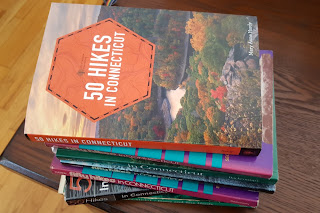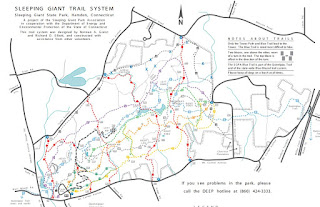Kombucha Flavors
Two years have gone by since I did my original blog post on making kombucha. I'm doing things a little differently now in terms of flavoring the kombucha, so I thought it was time to do an update.
I still brew the kombucha the same way. I start with boiling water, adding that to one cup of sugar in a gallon glass container with eight tea bags. I use decaffeinated tea. Usually green tea, sometimes black tea. But always decaf as caffeine bothers me. I do not use flavored teas anymore. Just plain green or black tea.
 |
| fresh tea |
After about two weeks (depends on the time of year - see my original post), my kombucha is femented enough and I start to process my batch.
 |
| ready to add flavor - just remove that SCOBY! |
I brew another batch of fresh sweet tea. When it cools, I take out the tea bags. And I transfer the SCOBY from a fermented batch to this new tea and set this in my dark spot to ferment.
(If you do not have another large jar to brew a new batch - just put your SCOBY with a little bit of the kombucha into a glass container and put it in your fridge. Then once you clean out the original jar you can brew another batch in it and add the SCOBY that's been hanging out waiting for you - SCOBYs are fine in the fridge as long as you have them in glass - no metal).
(If you do not have another large jar to brew a new batch - just put your SCOBY with a little bit of the kombucha into a glass container and put it in your fridge. Then once you clean out the original jar you can brew another batch in it and add the SCOBY that's been hanging out waiting for you - SCOBYs are fine in the fridge as long as you have them in glass - no metal).
Now I add another step to the fermented batch that is ready. This new step adds very fresh flavors to the tea and allows me to be creative!
This post will focus on my favorite flavor - Strawberry Basil. (I'll list other possible flavor combinations later on).
I get a container of strawberries from the store (about a pint)
and pick a bunch of fresh basil from my garden.
Unfortunately, my basil is ready in August while local strawberries are ready in June. So I do have to use store bought strawberries. Next June I will try using store bought fresh basil and local farm fresh strawberries. I think that will make this even more delicious!
I clean and hull the strawberries (removing the green leafy tops). I clean the basil and pick out the nice leaves.
I use a high speed blender to puree my flavoring. I would think a regular blender would work out fine also. You want the puree to be as fine as possible so the flavors can permeate the fermented kombucha.
I puree the strawberries and basil together with a small amount of water (enough so the puree is liquid enough to pour).
I pour the puree into the fermented kombucha (the SCOBY has been removed). I recommend you pour the puree slowly. Sometimes it fizzes up as it mixes with the fermented kombucha, so much so that it might overflow.
Then I cover that puree and kombucha mixture with the paper towel again.
I let it continue to ferment for a couple of days. Even though the SCOBY has been removed, it will still ferment more. Just more slowly. If you let it sit for long enough it will start to create a kind of SCOBY on top. I've never let it ferment for more than four days and usually do about two.
 |
| flavoring ferments! |
I let it continue to ferment for a couple of days. Even though the SCOBY has been removed, it will still ferment more. Just more slowly. If you let it sit for long enough it will start to create a kind of SCOBY on top. I've never let it ferment for more than four days and usually do about two.
The next step is strain and bottle this new flavored kombucha.
If there is a bit of a solid layer on top I scoop that out. Otherwise I strain it with a fine mesh strainer.
And I pour it into my prepared bottles (see earlier post for the need to have very clean conditions when you are bottling).
I then label and refrigerate this batch of lovely flavored kombucha.
This method of flavoring gives you very fresh and delicious flavored kombucha. I like the herb and fruit combination. I use fresh herbs from my garden. I have made the following combinations:
Peach and Mint
Lavender and Cantaloupe
Watermelon and Mint
Lavender and Peach
Lavender and Peach
All delicious! I also have fresh thyme and rosemary. I'm wondering what fruit flavors might work with those....
Any fruit would work nicely. I think I did raspberries last summer but haven't done it this year. You could use frozen fruit that you thaw too (I'm thinking a nice mixed berry). You don't have to add herbs either. Just fruit is delicious as well! The herbs add a nice subtle difference to fruit flavors and I like to experiment.
Another flavor I do is fresh cider. I buy apple cider from a local farm market. After removing the scoby, I add a few inches of cider and cover it again. I let that ferment some more on my kitchen counter (this flavor I usually do four days). This does not have to be strained but if a new SCOBY has begun to form you should remove that (mostly to eliminate the ick factor). I usually add some ginger flavoring to this cider kombucha - usually food grade essential oil. But I know there are nice ginger syrups on the market and if you use one of those - add the ginger when you add the cider. Syrups have added sugar so you want that to ferment a bit after you add it.
Experiment! I get idea for flavors by looking at kombucha flavors at the local food stores. If you come up with a new and delicious flavor combination - please share! Let me know what you used.
Enjoy!

























































